Craniocerebral injuries account for 30–40 % of the total structure of injuries, while among combined injuries they account for about 80 % [3]. Every year, almost 160,000 children are hospitalized with a diagnosis of craniocerebral injuries [6].
Objective. To assess the features of the history and course of the recovery period in children of different ages with craniocerebral injuries.
Materials and methods. Under supervision were 50 children who were being treated in the department of neurosurgery. The analysis of complaints, anamnesis, and instrumental data was carried out.
All children were divided into 3 groups depending on their age. The first group included children under 3 years of age (18 children — 36 % of the total number of subjects), the second — 7 children (14 %) aged 3 to 7 years and the third group — 25 children (50 %) aged 7 to 15 years.
In the first group, the ratio of boys and girls was equal (56 % and 44 %), in groups II and III, the number of boys was twice as large (Fig.1.).
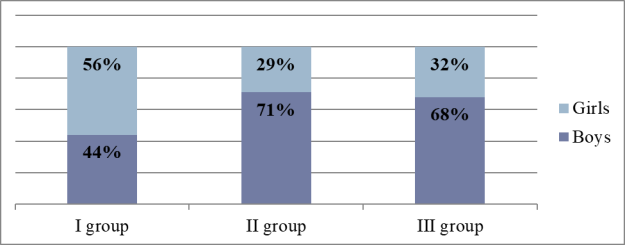
Fig. 1. Distribution of children by gender in age groups, %
Results. In childhood, there are: household, street, school, sports injuries and other accidents [2]. Most often, children were injured at home-54 % of children, as well as on the street — 38 %, at school-6 %, during a traffic accident-2 % (Fig. 2).
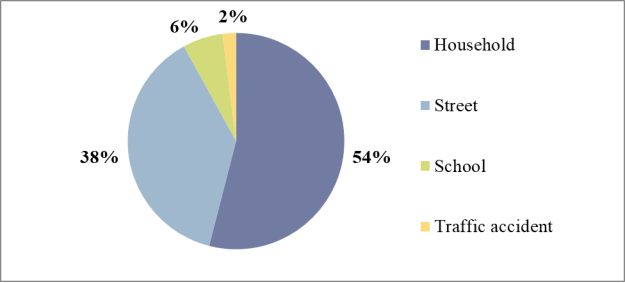
Fig. 2. Frequency of various types of injuries among all subjects, %
The nature of the injuries suffered depended on the age of the children (Fig. 3.):
– in children of pre-school age household injuries prevailed (94 % of cases), and girls were more often injured (63 %).
– in group II, household injuries were also more common, but in this group, boys were more injured (60 %), and the frequency of street injuries increased to 29 % of cases (only boys).
– street injuries prevailed among school-age children (58 % of cases), boys were injured more often (73 %), and school and road traffic injuries also occurred in this group.
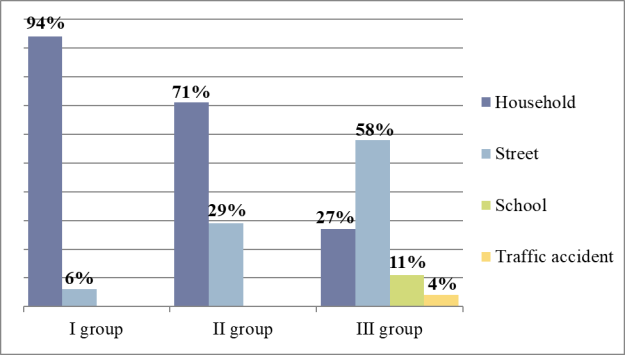
Fig. 3. Frequency of various types of injuries by age group, %
Children had closed craniocerebral injuries (96 %) and open craniocerebral injuries (4 %). Open craniocerebral injuries were observed only in age group III.
Among the clinical forms of craniocerebral injuries [4] there was a concussion of the brain (74 %) and a brain contusion (26 %).
In 22 % of cases, brain contusion was combined with a skull fracture in 14 % — with subgeleal hemorrhage (Fig. 4).
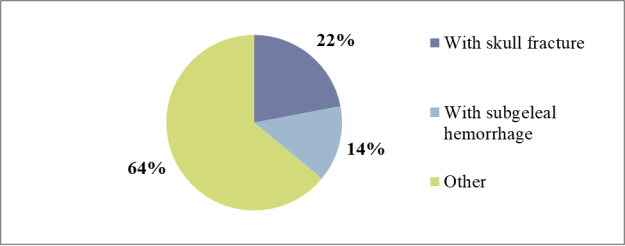
Fig. 4. Combination of a brain contusion with a skull fracture and a subgeleal hemorrhage, %
Only in 2 % of cases, concussion of the brain was combined with subgeleal hemorrhage.
Among brain injuries in early childhood, brain contusion (56 %) and concussion of the brain (44 %) were about the same frequency. Often there was a combination of brain contusion with a skull fracture (44 %) and with subgeleal hemorrhage (39 %). In group II, all children had a brain contusion. In group III, 88 % of children had a concussion of the brain; 12 % had a brain contusion (Fig. 5). Also in this group, craniocerebral injuries was observed, accompanied by a brain contusion and skull fracture.
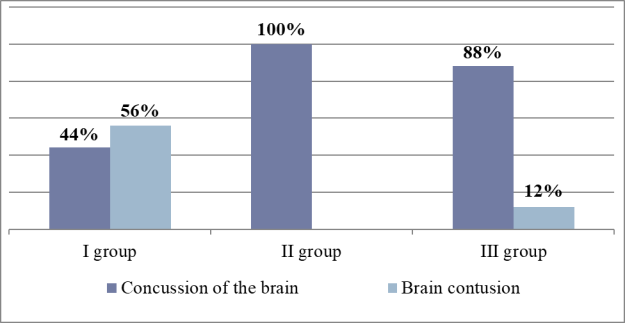
Fig. 5. Frequency of various injuries in craniocerebral injuries by age group, %
The main complaints received depended on the nature of the injury. In concussion of the brain, vomiting was more common (54 %) and headache (41 %) (table 1). When was the brain contusion, vomiting came first (23 %), sedation and lethargy came second (15 %). When were the skull fracture, the main complaints were the same as when was the brain contusion, since all cases of fractures were combined with a brain contusion.
Тable 1
Complaints detected during the initial examination, depending on the clinical form of craniocerebral injures,%
|
Complaints |
The concussion of the brain |
The brain contusion |
|
Headache |
41 % |
8 % |
|
Dizziness |
22 % |
8 % |
|
Nausea |
18 % |
2 % |
|
Vomiting |
54 % |
23 % |
|
Sedation, lethargy |
24 % |
15 % |
It should be noted that in early childhood were more characterized by general symptoms (sedation, lethargy, protervity), in spite of the nature of the injure.
Children in group III had focal symptoms:
– headache,
– dizziness,
– nausea,
– vomiting.
Principles of therapy. All children were shown conservative treatment. In the acute period, the main drugs of therapy for craniocerebral injures were:
– dehydrating agents [1];
– antibiotics;
– vasodilators;
– nootropic drugs [5];
– NSAIDs.
In the future, children are recommended: taking nootropic drugs and vasodilators courses prescribed by a doctor, observation of a neurologist.
All the children were discharged from the hospital with improvement. The length of stay of children in the hospital varied depending on the nature of craniocerebral injures from 4 to 17 days and averaged 7.1±2.2 days.
Conclusion
In children, craniocerebral injures occur more often in everyday life. At a younger age, the number of boys and girls who received craniocerebral injures were equal, after three years, among those who received this injury, boys quantitatively prevailed.
The most common injuries were concussion of the brain — 74 %, in second place — brain injury (26 %), in third place-a combination of brain contusion and skull fracture (22 %). The leading clinical symptoms of craniocerebral injures among the subjects were headache, dizziness, nausea, vomiting.
References:
- Badalyan, L. O. Children's neurology: studies. manual / L. O. Badalyan. — 4th ed. — Moscow: Medpress-inform, 2016. — 608 p.: Il.
- Kornilov, N. V. Traumatology and orthopedics: textbook / N. V. Kornilov. — St. Petersburg, 2011. — 488 p.
- Markin, S. P. View on the problem of traumatic brain injury / S. P. Markin / / Applied information aspects of medicine. — Voronezh, 2014. — Pp. 120–124.
- Smychek, V. B. Craniocerebral trauma (clinic, treatment, examination, rehabilitation) / V. B. Smychek, E. N. Ponomareva. — Meganewton.: Institute of world economy and international relations, 2010. — 430 p.
- Chikina, E. S. Craniocerebral injuries: the use of modern nootropic drugs in the acute period and in the treatment of post-traumatic encephalopathy / E. S. chikina, V. V. Levin / / Doctor. — No. 11–2005. — Pp. 53–58.
- Chukhlovina, M. L. Features of diagnosis of traumatic brain injury in childhood / M. L. Chukhlovina / / Pediatrician. — St. Petersburg, 2013. — Vol. 4. — No. 4. — Pp. 56–60.

